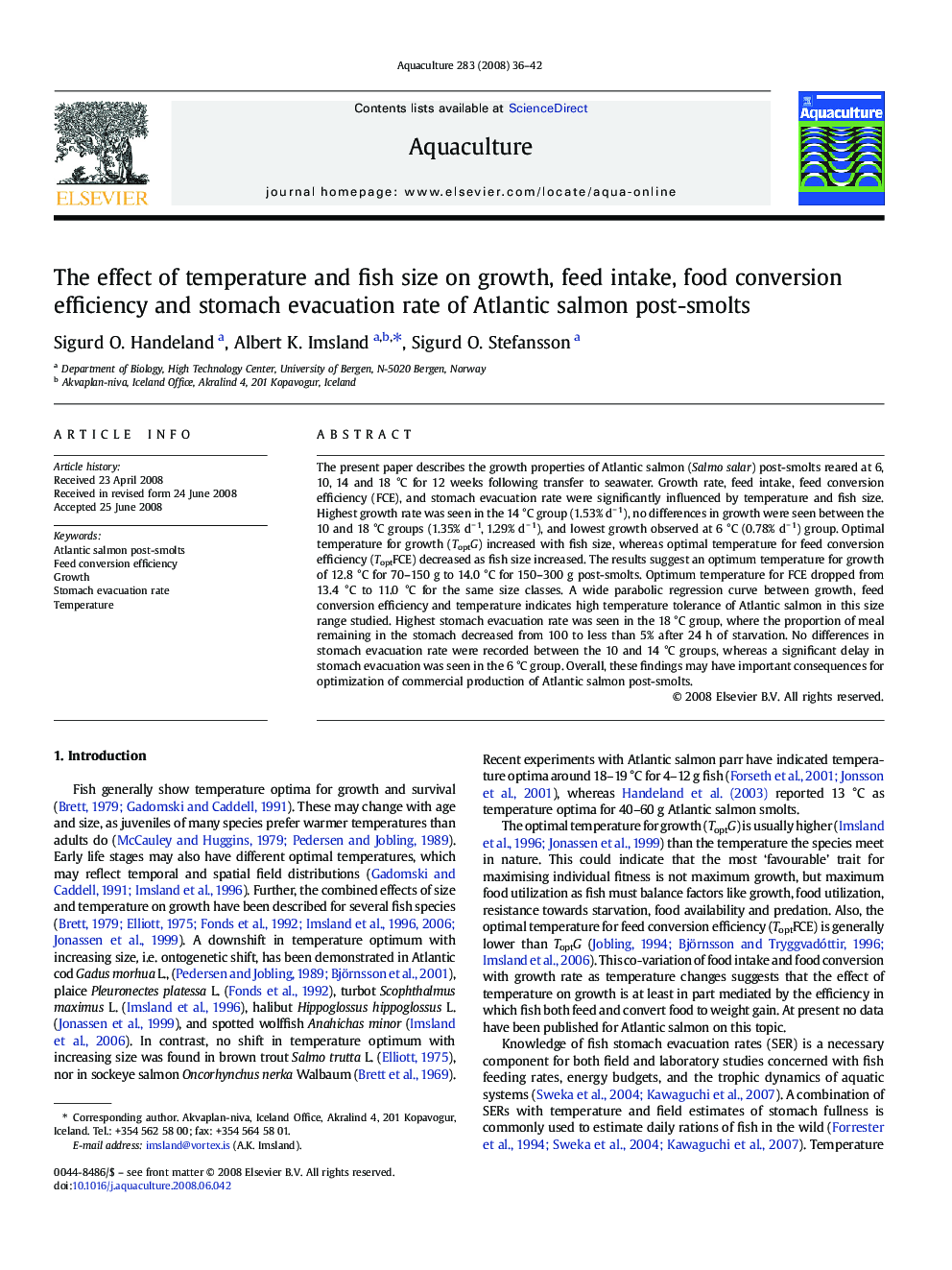| Article ID | Journal | Published Year | Pages | File Type |
|---|---|---|---|---|
| 2424473 | Aquaculture | 2008 | 7 Pages |
The present paper describes the growth properties of Atlantic salmon (Salmo salar) post-smolts reared at 6, 10, 14 and 18 °C for 12 weeks following transfer to seawater. Growth rate, feed intake, feed conversion efficiency (FCE), and stomach evacuation rate were significantly influenced by temperature and fish size. Highest growth rate was seen in the 14 °C group (1.53% d− 1), no differences in growth were seen between the 10 and 18 °C groups (1.35% d− 1, 1.29% d− 1), and lowest growth observed at 6 °C (0.78% d− 1) group. Optimal temperature for growth (ToptG) increased with fish size, whereas optimal temperature for feed conversion efficiency (ToptFCE) decreased as fish size increased. The results suggest an optimum temperature for growth of 12.8 °C for 70–150 g to 14.0 °C for 150–300 g post-smolts. Optimum temperature for FCE dropped from 13.4 °C to 11.0 °C for the same size classes. A wide parabolic regression curve between growth, feed conversion efficiency and temperature indicates high temperature tolerance of Atlantic salmon in this size range studied. Highest stomach evacuation rate was seen in the 18 °C group, where the proportion of meal remaining in the stomach decreased from 100 to less than 5% after 24 h of starvation. No differences in stomach evacuation rate were recorded between the 10 and 14 °C groups, whereas a significant delay in stomach evacuation was seen in the 6 °C group. Overall, these findings may have important consequences for optimization of commercial production of Atlantic salmon post-smolts.
